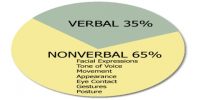Aspects of Staffing
The process of staffing for any organization is one of the most important parts of human resources function and it is very vulnerable to lawsuits. Staffing is concerned with manning various positions in the organization. The decisions you make about staffing your business can have dramatic effects on the quality of your work, your retention rates, and the level of customer service. Staffing involves the determination of manpower requirements of the enterprise and providing it with adequate competent people at all levels. Making appropriate staffing decisions is one of the most important tasks for a manager or small business owner. Thus, manpower planning, procurement (i.e., selection and placement), training and development, appraisal, and remuneration of workers are included in staffing.
There are three important aspects of staffing:
(1) Recruitment: Recruitment is a positive step which aims at attracting a number of candidates to apply for the given job. The higher the number of people who apply for a job, the higher will be the possibility of getting a suitable employee.
Manpower planning involves two techniques in estimation viz. (a) Workload analysis and (b) Workforce analysis.
- Workload analysis would enable an assessment of the number of types of human resources necessary for the performance of various jobs and the accomplishment of organizational objectives.
- Workforce analysis would reveal the number and type available to the fact such an exercise would reveal whether an organisation is understaffed, overstaffed, or optimally staffed.
(2) Selection: Selection, on the other hand, is a negative process in which a person is selected and the others are rejected. It aims at selecting the most rateable person out of the candidates who have applied for the job. It means that the right man should be selected for the right job. This will lead to better performance on all fronts i.e. quality, quantity, time, cost, etc. It includes the following steps:
- Preliminary Screening,
- Selection Test,
- Employment interview
- Reference & Background checks,
- Selection Decision,
- Medical Examination,
- Job Offer.
(3) Training: Training is concerned with the up-gradation of the knowledge and skills of the employees so that their ability to perform can be enhanced. It benefits both the enterprise & the employee. Training increases the skills and abilities of employees to perform specific jobs. It can be given for improving the current job or to prepare the employees for some intended jobs.
Some other important aspects of staffing:
Placement and orientation: Placement involves putting the selected man at the right place considering his aptitude and ability. Orientation is also known as induction. It means introducing the newly selected employee i.e. to various facets of the company his job, other jobs, nature of products, policies, rules and existing employees, etc.
Performance Appraisal: At this step, the capability of the employee is judged and for that, his actual work performance is compared with the work assigned to him.
Promotion: It is a process through which employees get a better salary, status, position, more responsibility, etc.
Compensation: The organization should have a fair salary or wage structure and should give incentives to those who deserve it.
It needs to be kept in mind that several factors such as supply and demand of specific skills in the labor market, unemployment rate, labor market conditions, legal and political considerations, company’s image, policy, human resource planning cost, technological developments, and general economic environment, etc., will influence the way recruitment, staffing and training will be actually carried out.















